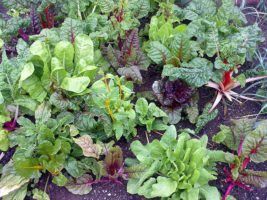

Environment
How to Design a Backyard Garden with Sustainability in Mind
Designing a sustainable backyard garden is about making choices that benefit your garden and the environment.
This means creating a garden that uses resources like water and soil more efficiently, reducing your environmental footprint. Sustainable backyards also reduce the need for chemical fertilizers and pesticides, promoting a healthier ecosystem.
This article shares practical ways to design a sustainable backyard garden, focusing on easy-to-implement strategies that are both environmentally friendly and low maintenance.
5 Tips for Designing a Sustainable Backyard Garden
Choosing the Right Plants
Selecting the right plants is crucial for a sustainable garden. Native plants are ideal as they are well-adapted to the local climate and soil conditions, requiring less water and care. This reduces the need for irrigation and fertilizers. Additionally, these plants offer natural habitats and food sources for local wildlife, promoting biodiversity.
We recommend researching native plants that thrive in your area and selecting a few shrubs that bloom throughout the year.
Water Conservation Techniques
Saving water is a critical aspect of sustainable gardening. Start by installing a rainwater harvesting system to collect rainwater from your roof.
This water can be used for your garden, eliminating the need for tap water. Additionally, consider installing a drip irrigation system. This system slowly releases water directly to the plant’s roots, greatly reducing water waste. Another effective technique is mulching, which helps retain soil moisture and reduces evaporation.
Natural Pest Control
Instead of relying on harmful chemicals, opt for natural pest control methods. Plant species that attract insects like ladybugs and bees, which can naturally keep pest populations in check.
You can also use homemade solutions like garlic or chili pepper sprays to deter pests. Another strategy is companion planting, where certain plant combinations naturally repel pests or attract their natural predators.
Composting for Soil Health
Composting is an excellent way to recycle kitchen and yard waste into rich soil for your garden. Not only does it reduce landfill waste, but it also enriches your soil with nutrients, reducing the need for synthetic fertilizers.
Start a compost pile with green materials, like fruit and vegetable peelings and cores, and brown materials, like dry leaves and twigs. Chopping these scraps with a shovel before adding them to the compost pile helps to speed up the decomposition process. Regularly turning your compost pile also aids in aerating and evenly decomposing the materials.
Using this compost in your garden improves soil texture, helps retain moisture, and fosters healthy plant growth.
Eco-Friendly Garden Tools and Practices
Choosing the right tools and practices can also make your garden more sustainable. Opt for hand tools over electric or gas-powered ones to reduce your carbon footprint.
As discussed above, it’s best to use organic fertilizers. These are made from natural materials and are better for the soil and the environment.
If you have a lawn, consider a manual push mower, which is eco-friendly and provides some exercise. Also, be mindful of your garden waste. Instead of throwing away plant trimmings and fallen leaves, use them as mulch or add them to your compost pile. This not only recycles garden waste but also adds nutrients back into your soil.
Key Takeaways
A sustainable backyard garden not only creates a healthier environment by cutting down on chemical usage but also promotes a balanced ecosystem.
This gardening approach benefits you, the local wildlife, and the planet. It leads to a reduction in water usage and garden waste, making it a more eco-friendly option. Over time, you’ll find that maintaining a sustainable garden requires less effort and money.
Here are five tips for designing a sustainable backyard garden:
- 1. Select native plants that require less water and care, supporting local biodiversity.
- 2. Conserve water using techniques like rainwater harvesting and drip irrigation.
- 3. Use natural pest control methods to reduce reliance on harmful chemicals.
- 4. Create compost from kitchen and yard waste to enrich soil and reduce landfill waste.
- 5. Opt for eco-friendly garden tools and practices to minimize environmental impact.
Conclusion:
In conclusion, designing a backyard garden with sustainability in mind is not just about creating a visually appealing space; it’s also about fostering a harmonious relationship between nature and human habitation. By employing sustainable gardening practices such as water conservation, native plant cultivation, and composting, we can contribute to the preservation of local ecosystems while enjoying the beauty of our outdoor spaces. Furthermore, embracing organic gardening methods and minimizing the use of chemical fertilizers and pesticides can have far-reaching positive effects on both the environment and our health.


 Environment10 months ago
Environment10 months agoAre Polymer Banknotes: an Eco-Friendly Trend or a Groundswell?

 Environment12 months ago
Environment12 months agoEco-Friendly Home Improvements: Top 7 Upgrades for 2025

 Features9 months ago
Features9 months agoEco-Friendly Cryptocurrencies: Sustainable Investment Choices

 Features10 months ago
Features10 months agoEco-Friendly Crypto Traders Must Find the Right Exchange





















